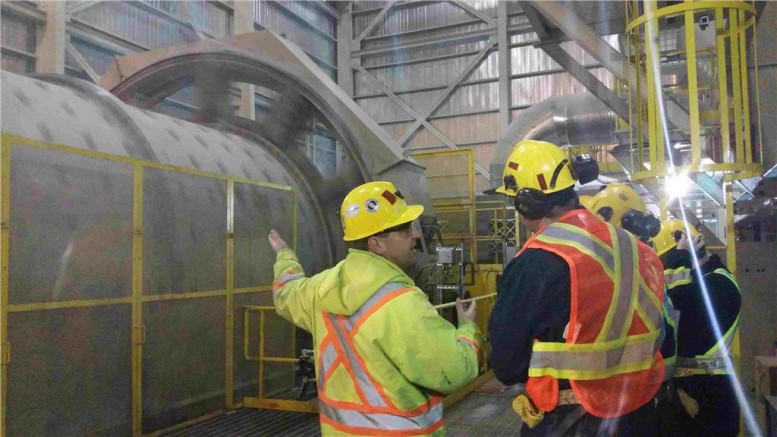VANCOUVER — Kirkland Lake Gold’s (TSX: KGI; LSE: KGI; US-OTC: KGILF) quarterly results reveal that it has two advantages at its Macassa gold complex in northeastern Ontario: higher grades at its South Mine Complex (SMC), and a weakened Canadian dollar. On Sept. 14 the company reported it had achieved record gold production at Macassa, while generating $4.1 million in quarterly free cash flow and keeping a $81 million cash balance at the end of July.
Kirkland milled 85,000 tonnes with a 15.4-gram-gold-per-tonne head grade at a 96.6% recovery rate, which produced 41,200 oz. gold. The company reported all-in sustaining costs of $1,193 per oz., which equates to a more tenable US$956 per oz., when taking foreign exchange rates into account.
“I’m happy to say that we had another consecutive quarter of profitability and free cash flow generation,” president and CEO George Ogilvie said during a conference call. “We are showing steady improvements in most of our key performance metrics. Although our tonnes per day have flatlined, we’re confident that, with the additional trucking capability we expect in the short-term, we can further improve our margins.”
SMC is a big win for Kirkland, and accounted for 71% of its milled tonnes during the quarter. The company is extending its underground development at the site, with its main ramp approaching the 5,600 level. A fifth stope was brought into production at SMC during the quarter, while another could hit production later this year.
Meanwhile, Kirkland has modified its power infrastructure to further reduce costs, and invested in more equipment to help improve underground and surface operations.
“We continue to explore [SMC] on the HM claims, further pushing it to the east and to depth. We’re also doing a bit of exploration work up and around the 3,400 level, where we released good assay results earlier this year,” Ogilvie said. “Hopefully some time [next year] we’ll have a large-enough new reserve and resource that will give us another mining front and more opportunity for getting the tonnes per day up.”
In June Kirkland released underground drill results from SMC’s HM claim area, which lies 610 metres southeast of the No. 2 shaft at the main Macassa complex. The company has been testing inferred resource blocks, as well as fringe areas around the New South Zone (NSZ) and a parallel Hanging Wall Zone (HWZ).
The program extended NSZ and defined HWZ over a 60-metre strike length, with assay highlights including: 276 grams gold over 2 metres true width in hole 53-2705; 136 grams gold over 2 metres true width in hole 53-2822; 104.2 grams gold over 4.8 metres true width in hole 53-2701; and 126.5 grams gold over 2.1 metres true width in hole 53-2699.
Kirkland expects its eight-month gold production will total between 90,000 and 100,000 oz. gold from May through December. All-in cash cost guidance increased roughly $50, reaching $1,300 to $1,400 per oz. Full-year production in 2016 could total between 160,000 and 180,000 oz.
BMO Capital Markets analyst Brian Quast has a “market perform” rating on Kirkland, with a $6.75-per-share price target. BMO Research noted on Sept. 15 that the company’s adjusted earnings came in slightly lower than expected at 6¢ per share due to higher-than-anticipated operating costs, though it notes there were “no surprises” on the revenue line.
“Operationally, the focus remains on completing the ramp to the 5,600 level, with development progressing as planned [and completion expected in January 2016]. BMO Research sees this as positive, as grades are expected to increase at depth,” Quast wrote in a research comment.
Kirkland has been a big bounceback story since a 74% surge in share price over the past nine months.
The company has traded within a 52-week window of $2.79 to $6.88, and closed at $5.08 per share at press time.
Kirkland Lake Gold has 80.4 million shares outstanding for a $407.5-million market capitalization.


Be the first to comment on "Kirkland Lake benefits from high grades at SMC"